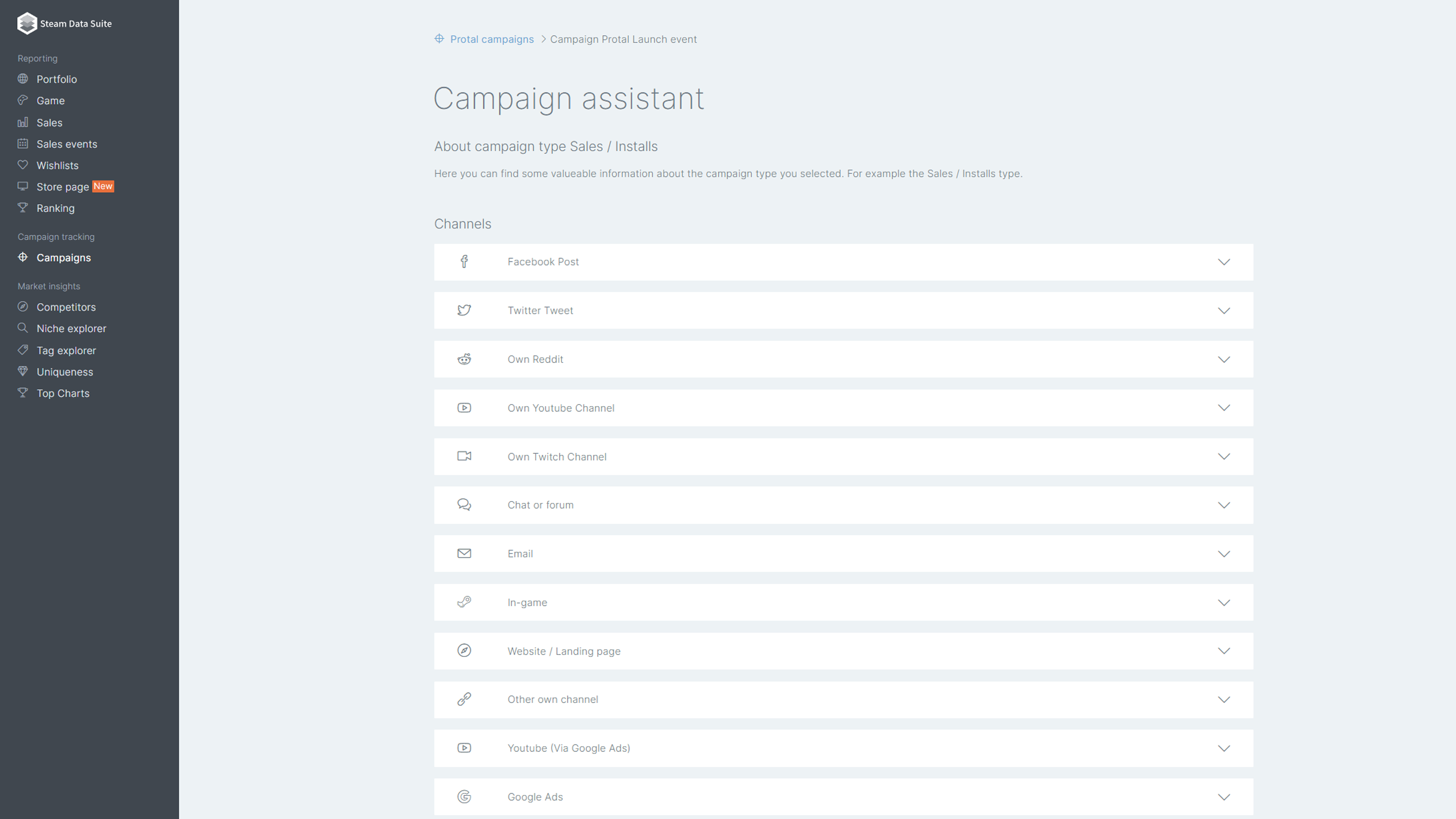The Rise of Performance Marketing for Steam
- March 25, 2022
- 10:49 am

Marketing attribution is the process of analyzing the effectiveness and efficiency of your marketing campaigns. In the case of PC gaming, and Steam specifically, it allows you to determine which marketing campaigns, as well as the channels on which they run, are best at motivating players to purchase your game(s).
Campaign Tracking
Campaign tracking, and performance marketing as a whole, have been an integral part of mobile game marketing since its beginning and it is safe to say that it plays a huge role in the success of the industry. This, among other factors, is a huge reason why there is an ever-growing interest and demand for proper campaign attribution in the PC gaming industry.
Why is it so important to measure the performance of your marketing campaigns aimed at driving more players to your games?
Marketing campaigns are undoubtedly one of the most effective ways to improve the sales performance of your games. Research has shown that people tend to feel more positively about advertising games than other types of advertising. Pair that insight with the inexhaustible advertising capabilities of social media and search engine marketing, and you have should have a sound strategy to improve your games’ sales performance, technically.
While the capabilities of social media campaigns in driving sales are undisputed, running several campaigns across multiple platforms and channels is not cheap, which is why you need to be able to determine which platforms drive the most conversion. This is where campaign attribution comes into play.
To kick off a successful campaign attribution strategy you should collect all relevant campaign-related data for your game. Depending on the capabilities of the tool you are using, you should aim at collecting data from all stages of the buying funnel. This includes awareness, interest, conversion as well as engagement. However, interest and conversion can be considered the two most important metrics to measure the effectiveness and efficiency of your campaign. While driving awareness for your games is important, if it doesn’t lead to more interest and consequently conversion, you will hardly see any ROI.
Let’s look at the two metrics of interest and conversion in a bit more detail.
Interest: You must learn where, i.e. on which social media platforms or your website, voice interest in your game. Metrics that help you gauge player interest are click-through rate (CTR), pre-orders, and wishlist additions.
Conversion: Conversion determines which platform drives the most buys or installs. While your marketing campaign on Reddit might drive more clicks, it can turn out that Twitch, regardless of generating fewer clicks, is more effective in motivating players to buy your game, rather than just checking out its store page.
When evaluating how your campaigns perform, conversion rate remains the strongest metric. As mentioned above, clicks are a great indicator of player interest, but if these don’t result in an appropriate volume of purchases/installs, you won’t see the desired ROI from your campaigns. The best way to measure this is by assessing your campaign’s cost per install (CPI). Keep optimizing your campaigns until you arrive at a CTR and CPI that are in line with your targets.
Unfortunately, no data is absolute, and there isn’t a campaign attribution tool that can guarantee 100% accuracy. The trick lies in measuring the performance of different campaigns, and to keep testing and optimizing for the best results, which will be reflected in your games’ sales performance.
The Influencer Market
Influencer marketing campaigns have proven themselves to be one of the most effective methods to drive new players to games. As already highlighted by Newzoo, the success of almost all currently successful games can partially be attributed to live viewership. E.g., the revival of Facepunch studio’s hit Rust is almost exclusively thanks to xQcoW, who picked the game back up in November 2021, resulting in the quadrupling of its monthly live viewership hours.
While it can almost be guaranteed that the promotion by top-tier gaming influencers will result in the desired clicks and installs for a game, they are far from inexpensive and are likely to exceed a medium-sized publisher’s marketing budget.
To run profitable influencer marketing campaigns, it makes more sense to work together with multiple smaller and medium-sized content creators who are affordable but at the same time have an appropriate viewership to promote your games. The key lies in identifying those that generate the most interest and ideally sales/installs for your game. The only way to do that properly is with campaign attribution tools.
In the case of Steam, however, this is easier said than done. The platform does not allow any tracking of the purchase button of games’ store pages, which makes it extremely difficult to link the purchase of the game back to a marketing campaign. But there are solutions. For example, Steam Data Suite has developed an innovative, fully GDPR compliant fingerprint technology that is capable of attributing the purchase or rather installation of a game back to a player’s click on a campaign. If you want to learn more about how it works, click here.
About Us
At Steam Data Suite, we develop tools to help game companies reach their full commercial potential on Steam. From sales to market intelligence and performance marketing solutions, we are aiming to provide a set of sophisticated tools to help developers & publishers succeed in this crowded marketplace. If you are looking for help in improving your games’ sales performance on Steam, feel free to reach out or book a demo of our platform.
We’ll be happy to get your feedback about our insights, tools, and features at info@steamdatasuite.com.

